

Building Community Finding Your Tribe







Dear Readers,
It brings me immense joy to present this month's issue on a topic that is incredibly close to my heart: finding your tribe. In a world where we are constantly connected through technology yet often feel more isolated than ever, the importance of true friendship cannot be overstated.
I have had the privilege of sharing my life with the same remarkable group of friends for the past 30 years. Our bond has stood the test of time, weathering the myriad of experiences life has thrown our way. From the joys of births and weddings to the heartaches of deaths and divorces, our friendship has been a steadfast source of support, laughter and love. There is something profoundly comforting in knowing that no matter what happens, these friends are always there, ready to lend a hand or share a smile.
Finding your tribe, those people who understand you deeply and stand by you through thick and thin, is one of life's greatest treasures. True friendship enriches our lives, offering us a sense of belonging and a support system that is invaluable. It is in the company of such friends that we find the courage to be our true selves, to pursue our passions, and to navigate the complexities of life with grace and resilience.
In this issue, we delve into the importance of cultivating and maintaining these deep, meaningful relationships. We explore how to find your tribe, nurture these connections, and ensure they continue to flourish over the years. Our stories and tips aim to inspire you to seek out those kindred spirits who will stand by you, just as my friends have stood by me.
As you read through these pages, I hope you feel encouraged to cherish the friendships you have and to seek out new connections that will add joy and richness to your life. Remember, a true friend is one of the greatest gifts you can give yourself.
With warmest regards,
Regina

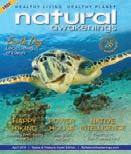

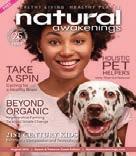
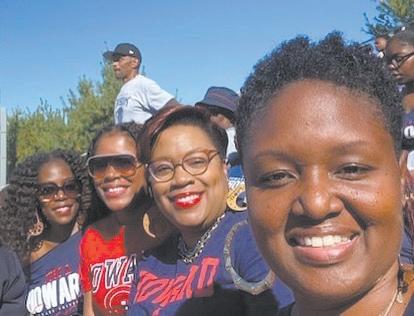
GREATER RICHMOND EDITION
Publisher Regina Hall Rudolph
Editors Tammie Jones Randy Kambic Martin Miron
Design & Production Patrick Floresca
CONTACT US
12220 Chattanooga Plaza, Suite 122 Midlothian, VA 23112 804-495-0325
Regina@NARichmond.com NARichmond.com

Natural Awakenings Richmond
Facebook is a registered trademark of Facebook, Inc.
SUBSCRIPTIONS
Subscriptions are available by sending $12 (for 6 issues) to the above address.
NATIONAL TEAM
CEO Kimberly B. Whittle
CMO Vee Banionis
Sr. VP Operations Brian Stenzler, DC
National Sales Darleene Lee
National Editor Sandra Yeyati
Editor Brooke Goode
Copy Editor Melanie Rankin
Print Production Specialist Kevin Rankin
Design Director Agnes Mazeikaite
Production Flip180
Customer Service Dani Bucad
CONTACT US
Natural Awakenings Publishing Corporation 350 Main Street, Suite 9B Bedminster, NJ 07921 Ph: 239-206-2000
NaturalAwakenings@KnoWEwell.com
Cover image by stockbroker/123rf.com
© 2024 by Natural Awakenings. All rights reserved. Although some parts of this publication may be reproduced and reprinted, we require that prior permission be obtained in writing. Natural Awakenings is a free publication distributed locally and is supported by our advertisers. Please call to find a location near you or if you would like copies placed at your business. We do not necessarily endorse the views expressed in the articles and advertisements, nor are we responsible for the products and services advertised. Check with a healthcare professional regarding the appropriate use of any treatment.

Regina Hall Rudolph, Publisher

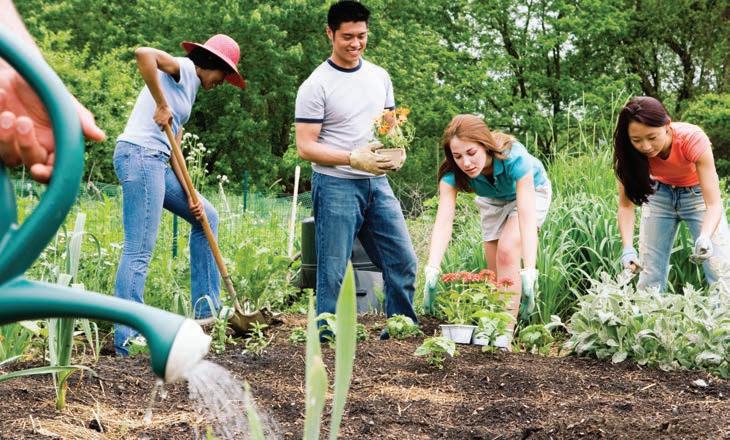

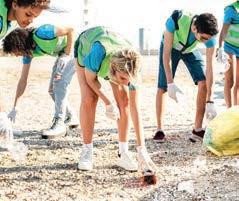

Community Move + Breathe at Abner Clay Park
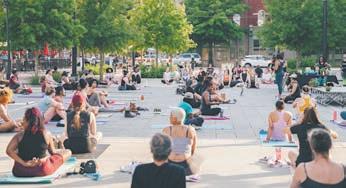
At Community Move + Breathe in Abner Clay Park, held at 6 p.m. every Wednesday in August, an accredited teacher will provide a guided practice of breath and movement, followed by a meditative sit to promote community healing, liberation and connection. Everyone is welcome to take a moment for selfinquiry to elevate their own self-care and community care.
All proceeds support in-person and community-based programming at The Well Collective location, schools, community organizations and programs, and initiatives supporting accessible wellness and social change in Richmond.
Cost is $10 per class. Location: 200 W. Clay St., Richmond. Register (required) at Tinyurl.com/Move-And-Breathe and arrive 10 to15 minutes early to check in. For more information, call 804-447-5191 or visit TheWellCollective.space.
Learn and Grow Together at W.o.M.a.N – Working on Making a New Event!

Working on Making a New (W.o.M.a.N), a nonprofit organization dedicated to improving the lives of Women in need, will present an enlightening day from 10 a.m. to 2 p.m., August 10, at the Hofheimer Building dedicated to guiding and teaching women on their journey toward growth and empowerment. This event is designed to provide the tools and insights needed to navigate life's challenges and seize opportunities for personal and professional development.
Attendees can learn from esteemed guest speakers, including a therapist, life coach, leadership coach and self-care and yoga instructor, as well as gain valuable insights and practical advice to apply in daily life. They will be inspired by performances from talented singers and a gifted poet, adding a touch of artistry to the learning experience.
Engaging in sessions that focus on healing and self-care provides strategies to nurture well-being, and participating in activities designed to enhance self-worth and self-confidence empowers taking charge of life.
Cost is $50. Location: 2818 W. Broad St., Richmond. Register at WorkingOnMakingANew.org.
New Digs for Exhale Massage
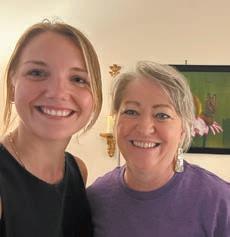
Exhale Massage is excited to announce its move to a larger location at 2405 Westwood Avenue, Suite 107, in Richmond, to better accommodate its expanding clientele and staff. The new space, designed with client comfort and healing in mind, will allow for more therapy rooms, a wider range of services and a more serene atmosphere. This expansion reflects Exhale Massage's commitment to providing exceptional care and personalized treatment plans.
Therapists Patti Calkins, LPTA, LMT, and Jordan Leonardis, LMT, celebrated for their skilled techniques and compassionate approach, are particularly enthusiastic about the move. They look forward to utilizing the enhanced facilities to help clients achieve greater healing and well-being. The larger location will enable the entire Exhale Massage team to offer more appointment slots, ensuring clients can access the therapeutic services they need more easily.
The move marks a significant milestone for Exhale Massage, reinforcing its dedication to holistic health and wellness. Clients can expect the same high-quality service in a more spacious and inviting environment.
For appointments and more information, call 804-404-6563 or visit exhalemfr.com.
Kudos
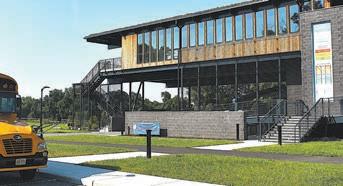
The James River Association (JRA) has opened the James A. Buzzard River Education Center, the second of three new JRA river centers across
the watershed, as part of its $25 million James Changer Campaign (JamesChanger.org) along Richmond’s historic riverfront adjacent to the Great Shiplock to be a hub for environmental education in the River City.
JRA has conducted environmental education programs for school groups for more than 25 years, including more than 20,000 students this year alone, through programs that span the full length of the river. The new Center will enhance JRA programs for regional schools through dynamic indoor education labs and outdoor classrooms, as well as close proximity to the tidal James River, the woods on Chapel Island and the surrounding Dock Street Park.
For more information, visit TheJamesRiver.org.
Patti Calkins and Jordan Leonardis
Lifestyle, Nutrition and Bone Density
According to the National Institute of Arthritis and Musculoskeletal and Skin Diseases, bones that contain more minerals are denser, stronger and less likely to break. With age or certain medical conditions, bones can become less dense, and osteoporosis can develop, causing them to become weak and brittle.
A study published in the journal Nutrients evaluated the role of lifestyle and nutrition on women’s bone mineral density. The study included a cross-section of more than 850 healthy premenopausal Saudi women divided into two age groups: 20-to-30-year-olds and 30-to-40-year-olds. Participants had their bone mineral density measured, provided a blood sample and self-reported sociodemographic, medical history, lifestyle, diet and physical activity information. The results showed that adequate vitamin D levels, physical activity and proper nutrition positively influence bone mineral density values, which can impact bone health later in life.


Healing Circle Counseling and Services, LLC offers high quality, heart centered mental health care to children, adolescents, adults, couples, families and groups. We provide outpatient therapy and psychiatric medication management from ages 3 through the lifespan. 804-924-7600
healingcirclecounseling.com
Asbestos in Cosmetics
Talc is used in many forms of makeup, including bronzer, blush, eyeshadow, foundation, mascara, lipstick and dry shampoo, because it absorbs moisture and prevents caking. But when it is mined, talc may be contaminated by naturally occurring asbestos, which is not evenly distributed, making testing for it difficult.
British women have sued leading cosmetic companies in U.S. courts, claiming they contracted mesothelioma, an incurable cancer of the lining of the lung, heart or stomach, through their use of cosmetic products. Unless related to employment, it is difficult to bring legal action for mesothelioma in the UK, and many of the large cosmetic companies are based in America. These women are seeking compensation and to raise awareness of the risks.
Johnson and Johnson (J&J) faces nearly 54,000 lawsuits related to claims that talc in baby powder caused ovarian cancer. A Reuters investigation found that J&J executives knew for decades that talc can contain asbestos.
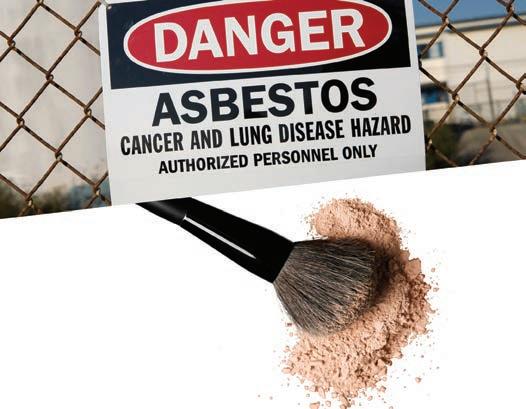

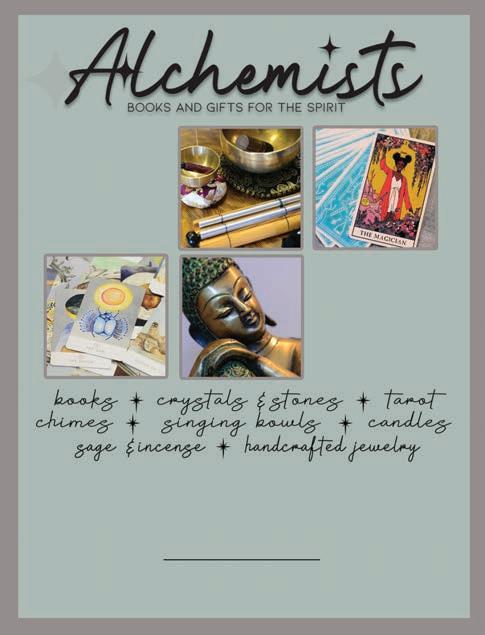


Natural Remedy for Radiation-Induced Dermatitis
Harmful Chemicals in Decaffeinated Coffee
Environmental activist groups filed petitions with the U.S. Food and Drug Administration to remove two chemicals from their safe list that are used in the production of decaffeinated coffee. Trichloroethylene and methylene chloride were found to cause cancer decades ago by the National Cancer Institute. Notably, the U.S. Environmental Protection Agency recently banned the use of methylene chloride for industrial use due to its risk of causing cancer and other serious health conditions. Safer methods for decaffeinating coffee exist, and some brands, like Peet’s Coffee, have made the switch. To find out how a brand of coffee is decaffeinated, consumers can visit CheckYourDecaf.org or contact the producer.

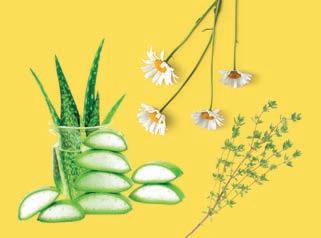
Dermatitis affects 95 percent of patients undergoing radiation therapy. According to a review published in Drugs in Context, the symptoms of radiation-induced dermatitis include pain, ulceration, swelling, itching, burning and physical and psychological discomfort. In some cases, opportunistic infections may also arise. While initial treatments involve moisturizers, dressings and antihistamines, more severe cases are treated with topical corticosteroids and antibiotics.
Seventy breast cancer patients undergoing radiation treatment participated in a 2024 randomized, double-blind study published in Contemporary Clinical Trials Communications to test the effectiveness of Alantel, a topical body cream that contains concentrated levels of aloe vera, chamomile and thyme. Half the group applied Alantel during the four-week trial, and the control group applied a standard moisturizing emollient cream that contained beeswax. The Alantel group had significantly lower incidence of lesions and a significantly lower duration of dermatitis than the control group.

Africa images/CanvaPro
Divine Interventions by Audra Franta
by Martin Miron
Rev. Audra Franta, Mh.D, an intuitive (w)holistic wellness practitioner, mentor and owner of Awaken Energy Center provides (w) holistic health services through spiritual and energy healing. She says, “I call myself a divine interventionist because I utilize my spiritual gifts to connect with my client’s energy. I channel guidance, wisdom and spiritual healing from God, source and the client’s higher energy. With the client’s participation, together we work to shift thought and emotional patterns that are blocking mental, physical and spiritual progress. As a result, my clients feel lighter, happier, focused, peaceful and more in alignment with their true purpose." Franta holds a doctorate in metaphysical studies and spiritual healing, including sound and color healing, kundalini light energization healing and reflective etheric healing. She is a spiritual healer, medical intuitive, holistic health practitioner and ordained minister of the Church of Wisdom, as well as a member of the Association for Research and Enlightenment, where she received her certification as a holistic life coach, past-life regression practitioner and hypnotherapist.
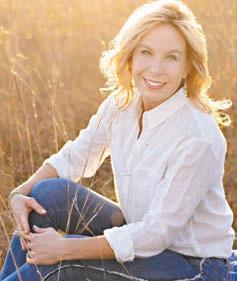
our lives and stepping into a process of understanding and healing, we can create profound shifts in our reality.”
She explains, “Connecting with our spirituality opens the door to incredible experiences. When we step into our spiritual path, we begin to feel change within. We know we are supported in all aspects of our lives, both physical and non-physical. This awareness and support system can lead to a life of fulfillment and joy and most importantly, peace. My business is a testament to the transformative power of spiritual growth and healing. It is an opportunity and vehicle for those seeking to shift their lives through understanding, healing and spiritual connection. Together, we can navigate this journey and discover the incredible potential that lies within each of us.” Awaken Energy Center offers a variety of services designed to promote holistic healing and spiritual growth by cleansing physical and energetic systems and by removing negative energy and balancing energy systems. Franta’s services can be conducted in person at her Richmond- based location or remotely.
well-being. Clients will experience a transformative consultation via scan(s) that thoroughly examine their spiritual, emotional, mental and physical well-being. Spiritual Scan: Discover spiritual depth and resources. Emotional/Mental Scan: Identify patterns of thoughts and feelings that either support the journey or cause disturbances. Physical/ Etheric Scan: Understand how inner discord impacts the body.
Each of these three scans, paired with an indepth analysis, charts imbalances and misalignments while highlighting strengths and abilities. They can provide a clear vision of what is blocking progress and how to achieve goals.
Yhandi’s Inner Light is a unique service focused on deep spiritual healing and connection. Healing the Inner Child and Inner Adult through Yandhi’s Inner Light method creates a powerful inner alchemy that harmonizes thoughts and emotions, heals past traumas of abuse and neglect, and fosters a healthy relationship between your inner child and adult self. This life-changing process leaves clients with a profound sense of accomplishment and openness to new, positive experiences. It enhances their creativity and provides the freedom to choose the life they desire.
“I founded my business in 2021 because I was driven by a deep desire to help people heal and transform their lives. This journey wouldn’t have been possible without the guidance of my teachers, mentors, and healers, but it was a willingness to learn and grow that truly made the difference,” shares Franta. “My journey into the spiritual aspects of life was fueled by my desire to understand the deeper truths of existence and to alleviate the ‘dis’ease, sadness, depression and confusion that many people experience. By embracing the applicable spiritual laws that govern
Some of her offerings include Divine Guidance Reading sessions, where her clients receive insights and messages from spiritual guides, including information from the Akashic Records. These readings provide clarity on life, relationships and spiritual growth, and can offer physical healing through spiritual wisdom. They are channeled messages that guide and support our life journey.
Holistic Healings include a combination of various healing modalities to address physical, mental, emotional and spiritual
Franta also provides an annual retreat, this year in Sedona, Arizona, which includes deep meditation training, yoga, hiking, sound baths and personalized spiritual support. The retreat, called Inner Sanctuary, will teach participants how to create and establish a foundational, connected, spiritual practice. Suitable for beginners and experts, it creates an “inner sanctuary” where participants can heal, receive loving guidance from their higher self and manifest the life they desire by creating a strong connection between their mind, body and spirit. Clients will process wisdom, heal and relax in a setting that nourishes all of their senses. This all-inclusive retreat is designed to be a spiritual adventure, revealing the fun and purpose the divine has in store for life.
For more information, visit AwakenEnergy Center.com. See ad on page 8.
The Power of Community
Finding a Path to Meaningful Connection
by Thais Harris, BCHN
Despite society’s increasing emphasis on individualism, the concept of community remains a powerful force for personal and collective well-being. Loneliness is detrimental to both mental and physical health and comparable to smoking or obesity in terms of risk factors. Among older adults, isolation is associated with an increased probability of dementia.
In his book Project Unlonely: Healing Our Crisis of Disconnection, Dr. Jeremy Noble discusses the public health and economic impacts of widespread seclusion, as well
as the importance of building meaningful connections. He advocates making loneliness screening a routine part of health care and prescribing social activities such as museum visits, classes and nature walks for patients. These measures have been effectively used in the United Kingdom.
There is a growing movement that encourages us to find our tribe—those that resonate with our own core values, interests and lifestyle. While historically associated with Indigenous groups, a “tribe” is defined as a social division consisting of
families or communities linked by social, economic, religious or blood ties, with a common culture and dialect. The point is to surround ourselves with supportive individuals that uplift us and provide a sense of belonging.
Multigenerational Communion
Family is, in a sense, our original tribe, serving a crucial role in our sense of belonging throughout life. Regardless of interpersonal dynamics, maintaining consistent connection with relatives can ease loneliness and improve longevity and other health outcomes. In the world’s Blue Zones, where people live the longest and have a better overall quality of life, the happiest centenarians build their lives around their families, and multigenerational households are common.
To remain anchored in our heritage, it is essential to regularly share moments and activities with kin, enjoying family meals, holiday parties, game nights, walks around the neighborhood or even living room hangouts. Simply spending time together allows us to share family stories, learn from each other and create traditions. Outside the family, there are many

ways to find or create a tribe of cheerful acquaintances and deeply held friendships that form a safety net to shield us from drifting into isolation.
Serving Others
Volunteering is a powerful way to engage in activities that align with our passions and values while also connecting with likeminded people and helping a cause or deserving group of individuals. One example is Volunteers in Medicine (VIM), founded in 2003, which brings together 70 medical professionals and approximately 100 community stakeholders that volunteer their time to provide free health care for the uninsured people of the Berkshires, in Massachusetts. While the practitioners treat patients—in-person and online—the others serve as interpreters, drivers and receptionists. The generosity of these individuals addresses an important need in the community and keeps people out of hospitals.
“By engaging in VIM’s mission, volunteers find purpose and meaning through the act of giving back, enhancing their own lives while improving others,” shares VIM Executive Director Ilana Steinhauer. “The opportunity to serve the community not only fulfills a personal desire to help those in need, but also fosters a deep sense of connection and community among volunteers. This camaraderie and shared mission enrich

the volunteers’ lives, creating a ripple effect of positivity that strengthens the entire community fabric, making it a cornerstone of community and personal development.”
Another example is nonprofit Citizen University, which equips Americans to be cultural catalysts. Their Local Civic Collaboratory aims to shift the paradigm of success from individual achievement to shared triumph. Through collaborative gatherings, participants are empowered to address local issues, launch educational initiatives and spark artistic endeavors while relishing in deep conversations, forging meaningful bonds and launching networks of unified action.
Making Deep Connections
Coming together around shared beliefs or devotional practices can be another avenue to step away from seclusion and into a loving fraternity. Some people with shared values and goals choose to live with each other in what is known as intentional communities, many of which emphasize sustainability, cooperation and mutual support. The Foundation for Intentional Community offers an online directory to find the right living situation based on multiple criteria, including geographical location, community type, dietary preferences, educational styles, religious or spiritual beliefs and renewable energy sources.

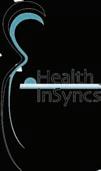
The Kindness of Strangers
When we are out and about, we encounter people we don’t know—strangers in supermarket aisles, bank lines or walking their dogs in the local park. Instead of passing by without acknowledging them, we have the choice to say hello or exchange pleasantries. On his podcast “Hidden Brain”, Shankar Vedantam explores how these tiny encounters can impact our lives. Smiling at people in the street, expressing gratitude for small acts of kindness or complimenting someone’s style elevates both parties. Studies by Amit Kumar, assistant professor of marketing and psychology at the University of Texas at Austin, and Nicholas Epley, professor of behavioral science at the University of Chicago Booth School of Business, highlight the beneficial, long-term impact of small acts of kindness and positive interactions on recipients and givers.
Bonding Online and In Person
If friendships were lost during the pandemic, rebuilding a tribe will require intentionality and creativity. Reaching out with purpose to create community might just be what saves us and the planet. When we feel a sense of belonging, we can collaborate for the common good and boost our ability to protect nature, innovate and find solutions for the world’s problems. How we network is limited only by our
804-377-2222 info@healthinsyncs.com healthinsyncs.com
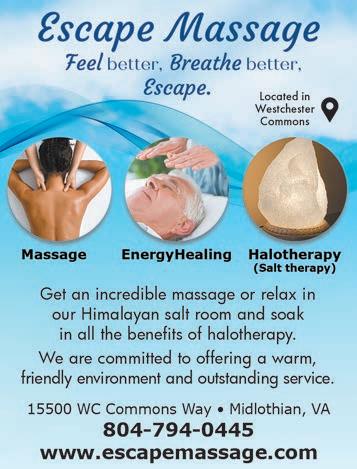
imagination: Take classes at the local library, community college or arts organization; find a fun activity on MeetUp.com; or form a group to make new friends that share a common interest.
While online tribes can offer accessibility and a broader reach, thus facilitating connections with people from different geographies and backgrounds, face-to-face interactions are essential to our well-being. Holistic psychologist Victoria Kar shares, “Never in history has humanity been more disconnected from each other than now. The predominance of urban lifestyles creates barriers for deep social connections, and technology creates a false sense of belonging—where we can reach someone on the other side of the world on a screen— yet have no one to hold next to us.”
In-person communities provide a more heartfelt sense of fellowship. When we are present, we emit energetic fields, and the heart radiates perhaps the most powerful energy. Studies conducted by the HeartMath Institute have shown that the heart’s magnetic field can be detected by other individuals up to five feet away, igniting our sense of belonging in a way that is not possible online.

In his recent advisory report, “Our Epidemic of Loneliness and Isolation,” U.S. Surgeon General Vivek Hallegere Murthy notes that, across age groups, people are spending less time with each other in person than two decades ago, and this is most pronounced among young people aged 15 to 24 that are engaging in 70 percent fewer interactions with friends. Murthy points out, “The impact of this lack of social connection can be felt in our schools, workplaces and organizations, where performance, productivity and engagement are diminished.”
The report outlines six recommendations to enhance social connection, including:

• Urging for greater social infrastructure at parks, libraries and public programs
• Enacting pro-connection public policies at every level of government such as access to public transport and paid family leave
• Mobilizing the health sector to address needs stemming from isolation
• Reforming digital environments
• Investing in research to deepen our understanding of social isolation
• Cultivating a culture of connection
In his book Together: The Healing Powe r of Human Connection in a Sometimes Lonely World , Murthy identifies three types of connections that play a crucial role in our lives: intimate (close friends and family), relational (friends and acquaintances) and collective (communities). Factors such as work culture, social media and urbanization can hinder meaningful connections, contributing to a growing sense of isolation.
As a solution, he emphasizes the importance of small, consistent actions such as active listening, expressing gratitude and engaging with community. True connection is a source of healing. The Surgeon General urges, “Answer that phone call from a friend. Make time to share a meal. Listen without the distraction of your phone. Perform an act of service. Express yourself authentically.”
Finding a tribe can significantly impact our health and happiness, providing support, joy and inclusion. The connections we choose to nurture can enrich our lives in profound ways, ensuring we thrive in body, mind and spirit.
Thais Harris is a board-certified holistic nutritionist, bestselling author and international speaker. Connect at NourishTogether.com.
FangXiaNuo from Getty
Images Signature/CanvaPro
The Environmentally Friendly Workplace
Agreener work environment reduces costs, optimizes building operations, saves energy and water, reduces waste and improves employee morale. A study by Brookfield Properties, a real estate developer, found that 93 percent of those working in an eco-friendly office feel happier. Here are some sustainable workplace measures.
• Conserve electricity. Install motionactivated light switches, and turn off computers during off-hours. Use a smart thermostat to schedule efficient temperature settings throughout the workday and on weekends and holidays. Strategically position window blinds to regulate room temperature. Switch to LED lightbulbs, which emit very little heat, use 75 percent less energy and last three to five times longer than incandescent bulbs.
• Travel less. Reduce the company’s carbon footprint and business travel expenses by employing video conferencing.
• Embrace renewable energy. Adopt solar panels and wind energy. Where available, choose an electric company that uses renewable energy sources instead of coal or natural gas.
• Recycle. Clearly label recycling bins in kitchens and common areas; post signs listing items that can be recycled. Donate or recycle old office furniture, computers and other electronics. Participate in recycling programs for printer cartridges and batteries.
• Go paperless. The average U.S. office worker prints about 31 pages a day,
contributing to 21 million tons of paper waste by businesses annually. Replace paper and ink with digital solutions.
• Decorate with plants. Live greenery beautifies workspaces, lowers stress and anxiety, boosts oxygen levels and reduces indoor air pollutants.
• Promote a sustainable kitchen. Use reusable mugs and kitchenware or offer compostable options. Keep reusable takeout containers for office leftovers. Replace paper towels with washable towels, compostable sponges, scrub brushes and cloth napkins. Keep a hamper close by and launder as needed.
• Ditch the plastic pods. A coffee pod machine produces plastic waste with each cup. Use a coffee pot or opt for
recyclable pods and a dedicated recycling bin nearby.
• Provide a water station. Plastic water bottles are packing landfills and polluting waterways. Install a filtered-water dispenser and encourage office workers to employ reusable cups and bottles.
• Use green cleaning products. Ecofriendly products are less toxic and produce less waste. Choose bar soap and refillable, sustainable cleaning solutions.
• Plan purchases. E-commerce is convenient but can contribute to packaging waste and carbon emissions. Purchase office supplies from sustainable suppliers; buy products with low lifecycle environmental impacts; order in bulk; and avoid small, last-minute orders.

Teona Swift from Pexels/CanvaPro
In Search of the Healthiest Diet
Sustenance and Habits Inspired by Blue Zones
by Maya Whitman
The average life expectancy is 77.5 years in the United States, but residents of the Seventh-Day Adventist city, Loma Linda, California, are outliving the rest of the country by 10 years. Like other regions of the world classified as Blue Zones, Loma Linda’s soil and water aren’t sprinkled with magic, but daily lifestyle and dietary habits might be key contributing factors.
Coined by National Geographic explorer and researcher Dan Buettner, the term “Blue Zones” is bestowed upon intriguing corners of the world where people reach their ninth decade and beyond without suffering from chronic illness and disease. While no definitive formula for longevity exists in Loma Linda or any of the other four Blue Zones—Nuoro Province, Sardinia, Italy; Nicoya Peninsula, Costa Rica; Okinawa, Japan; and Ikaria, Greece—commonalities include staying physically active, eating unprocessed food and enjoying a vibrant social network.
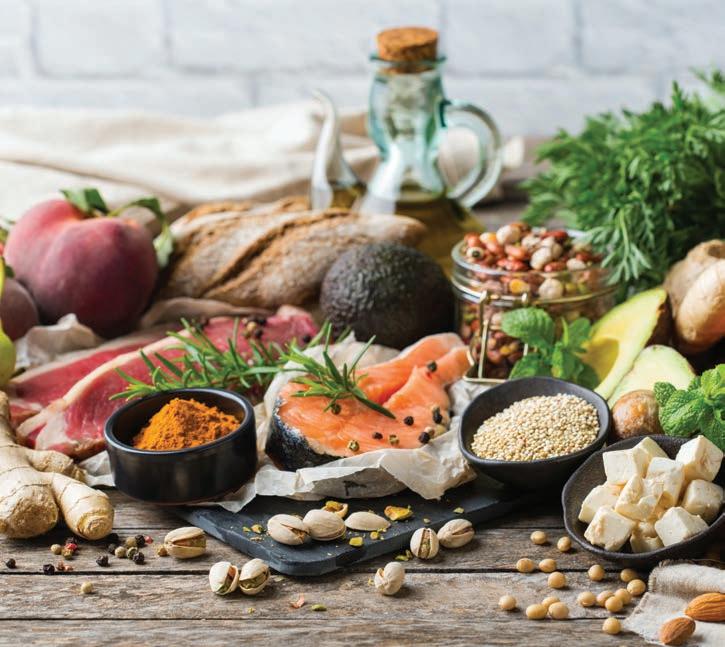
“By prioritizing physical activity, encouraging plant-based diets and creating spaces that promote social interactions, communities can reduce the incidence of chronic diseases and improve overall well-being,” says Buettner, author of The Blue Zones Kitchen, who found his life’s work traveling the world in search of centenarian secrets.
Delicious Simplicity
In 2023, JAMA Internal Medicine published the findings of a long-term study involving more than 75,000 women and 44,000 men over 36 years, which determined that adherence to one of four plant-based and Mediterranean dietary patterns can lower the risk of premature death. All of the dietary guidelines in this study included whole grains, fruits, vegetables, nuts and legumes. Growing evidence suggests that nutrient-dense, unprocessed meals play a major role in reducing inflammation and oxidative stress, which can contribute to cardiovascular disease, cancer and diabetes.
“Diets in Blue Zones are predominantly plant-based, with a heavy emphasis on vegetables, fruits, legumes and whole grains. They also eat a variety of beans, which are a staple in their diets and an excellent source of protein and fiber,” Buettner points out, adding that moderate portion sizes, unhurried mealtime and leaving the table when 80 percent full are also highlights of the Blue Zone lifestyle.
Anna Freedman, a natural-food chef, educator and founder of Wholefood Harmony,
Aamulya from Getty Images/CanvaPro
in London, England, specializes in a healthsupporting macrobiotic approach based on ancient Japanese philosophy and developed in the 1920s by George Ohsawa. She says, “Whole foods are essential to health and longevity. Plants capture the sun’s energy, so consuming vegetables, fruits, legumes and grains bestows both nutrition and vibrancy upon the body. These foods are alkalizing and directly nourish the cells, restoring the blood quality and supporting health and longevity.”
Macrobiotic favorites like lentils, chickpeas, whole grains and dark, leafy greens echo Blue Zone dietary models and are believed to promote overall systemic balance. The macrobiotic approach, adds Freedman, “can be adjusted to focus on improving a certain health condition or adapted to meet climate, phase of life or another factor.” In her work with clients, she encourages the consumption of a wide range of plant ingredients and cooking styles, and
even incorporates certain animal proteins, to accommodate client preferences.
Diets that seek to promote a longer, healthier life usually include powerhouse ingredients such as naturally fermented sauerkraut and kimchi, legumes like lentils and split peas, and whole grains, especially barley, millet and oats.
Social Sustenance
In our modern world, feelings of isolation are reaching epidemic proportions, and in the medical community, loneliness is now seen as a risk factor for mortality that is equal to the effects of obesity, smoking or a sedentary lifestyle. Through Blue Zone research, it is understood that emotional nourishment is vital to good health. According to Buettner, “In Blue Zones, people often engage in regular social interactions, whether it’s through communal meals, faith-based gatherings or simply spending time with neighbors and family.” A table of delicious
food surrounded by loved ones is an inspiring way to eat and age gracefully.
For Gladys McGarey, M.D., cofounder of the American Holistic Medical Association, who is still practicing medicine at 103 years of age, our thoughts are also a form of nourishment. “What we feed our minds grows and lives, and we become it,” says the author of the bestseller The Well- Lived Life. “It has to do with love, the whole process of life. Love must be shared to flow, and life is the same. We must not only create community, but live it.”
Freedman sums it up saying, “Eating and togetherness is a key feature of humanity, which is alarmingly in sharp decline. Food was always meant to be enjoyed together, and doing so serves up much more than simply nutrition.”
Maya Whitman is a frequent writer for Natural Awakenings magazine.





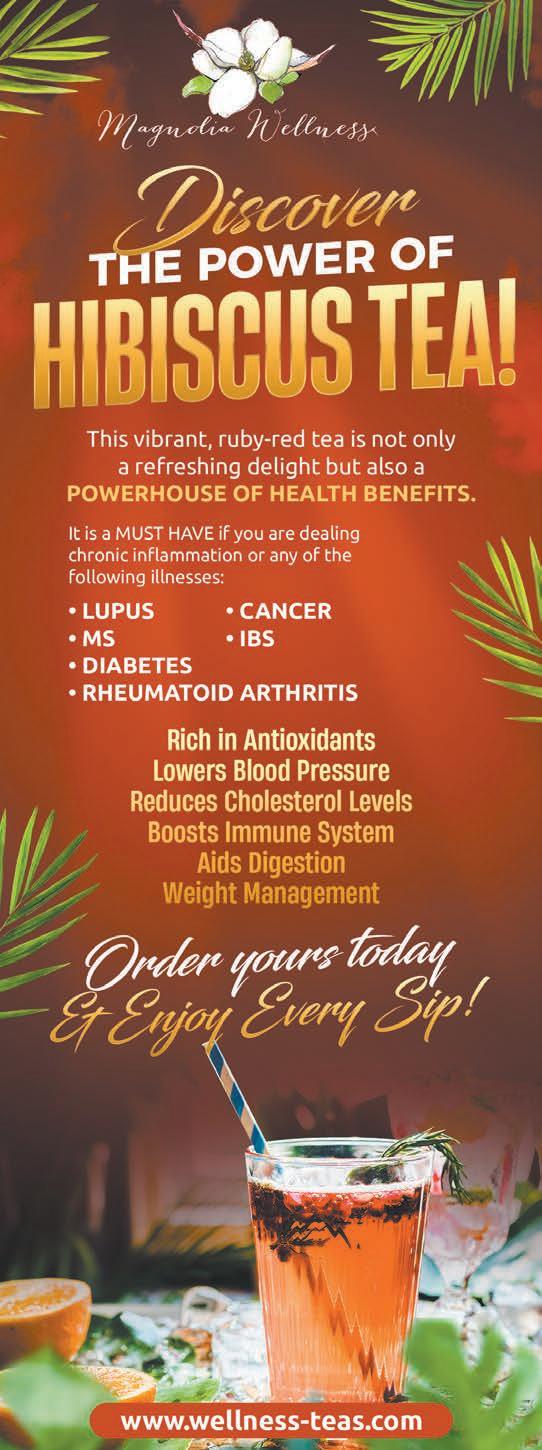

Bean and Squash Tortillas With Papaya Salsa
This recipe calls for the use of nixtamal corn tortillas, a staple in Mexican cooking. The masa is made by cooking and soaking dried corn kernels with calcium hydroxide or another alkali, which significantly increases its nutritional benefits. The tortillas can be made at home from scratch or purchased ready-made. Look for products made with nixtamalized corn masa.
YIELD: 6 SERVINGS
1 small ripe papaya, peeled, halved, seeded and chopped (about 1 cup)
1 small red bell pepper, stemmed, cored and diced (about ½ cup)
¼ cup fresh cilantro leaves, finely chopped
3 Tbsp extra-virgin olive oil
2 Tbsp fresh lime juice
1½ cups canned black or pinto beans, drained and rinsed
1 medium yellow squash, chopped (about 4 oz)
1 cup corn kernels cut from the ear or frozen kernels, thawed
2 medium carrots, peeled and shredded through the large holes of a box grater
1 tsp ground cumin
½ tsp ground dried cayenne (or less, to taste)
¼ tsp salt
6 nixtamal corn tortillas
Stir the papaya, bell pepper, cilantro, lime juice and 1 tablespoon of olive oil in a small bowl. Cover this salsa and set aside at room temperature for up to 4 hours.
Warm 1 tablespoon of the oil in a large skillet set over mediumhigh heat. Add the beans, squash, corn, carrots, cumin, cayenne and salt. Cook, stirring often, until the squash is tender, about 5 minutes. Stir in the papaya salsa and set aside off the heat.
Set the oven rack 4 to 6 inches from the broiler element; heat the broiler for a few minutes. Lay the tortillas on a large, lipped baking sheet and brush them with the remaining 1 tablespoon of oil. Broil until warmed and lightly toasted, about 30 seconds. Transfer the tortillas to serving plates and top each with a sixth of the bean mixture to serve.
Recipe courtesy of Dan Buettner.
Toasted Spiced Chickpeas (Sardinia Side Dish)
YIELD: 1½ CUPS
1 15-oz can chickpeas, drained and rinsed
3 Tbsp extra-virgin olive oil
2 tsp ground cumin
½ tsp garlic salt
½ tsp chili powder
¼ tsp freshly ground black pepper
Position a rack in the center of the oven and preheat to 350° F.
Toss the chickpeas, oil, cumin, garlic salt, chili powder and black pepper in a large bowl until well coated and uniform. Pour the mixture onto a large, lipped baking sheet and spread into one layer. Bake 45 to 60 minutes until browned and crisp, stirring occasionally.
Set the baking sheet on a wire rack and cool for 10 minutes. Use a slotted spoon to transfer the chickpeas to a serving bowl. Serve warm or at room temperature with plenty of napkins.
Recipe courtesy of Dan Buettner.
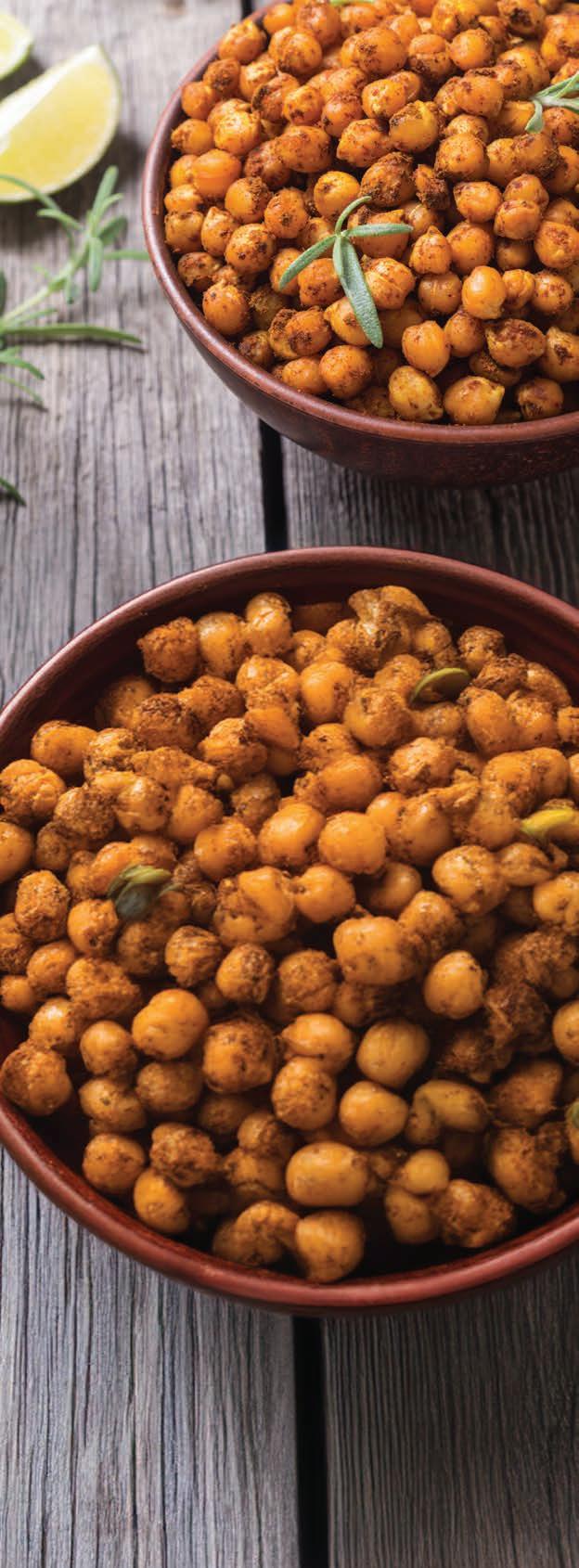

Immune-Boosting Soup With Miso and Ginger Scent
This macrobiotic soup combines all the healing and digestive benefits of miso and ginger. Noodles, fish and a variation of vegetables can be added, too.
YIELD: 4 SERVINGS
Dash sesame oil
1 leek, finely sliced
1 carrot, finely diced
1 zucchini or summer squash, finely diced
3-inch portion of wakame sea vegetable, rinsed and cut into small strips
3 cups boiling water
Spring onions, finely cut for garnish
4 tsp brown rice miso paste
1 inch ginger root, juiced
Heat the sesame oil and sauté the leek for one minute. Add the other vegetables and wakame. To make a broth, add water to cover the ingredients, bring to a boil then simmer for 4 minutes.
Remove one ladle of broth and place in a bowl. Add the miso to this broth, stirring to dissolve and incorporate the paste into the broth, and then pour it back into the original pot of cooked vegetables. Add ginger juice and simmer for another minute or so. Garnish with spring onion.
Recipe courtesy of Anna Freedman.
Body
Cross-Brain Fitness
An Integrative Workout for the Mind and Body
by David J. Sautter, NASM (CPT, FNS, PES), ACE (SCS)
Holistic approaches to health and well-being that consider the entire person—body, mind and spirit—are especially effective in cultivating creativity and mental equilibrium. Cross-brain fitness training encourages the use of both the left and right hemispheres of the brain in tandem to improve body and brain function.
One study published in Advances in Physical Education suggests that exercises involving movements across the middle of the body improved the ability to transfer motor skills from one hand to the other, most likely due to improved communication between the two sides of the brain. A 2016 study

published in the Journal of Exercise, Nutrition and Biochemistry found that a 12-week brain health exercise program for seniors improved lower and upper body strength, as well as aerobic endurance, while also increasing cognitive function and levels of brain-derived neurotrophic factor, a protein that plays an important role in neuronal survival and growth.
Engaging Sports
Physical activities that engage both brain hemispheres boost health and enhance creativity by integrating analytical and creative thinking. Team sports such as soccer and basketball are excellent for cross-brain development. They demand strategic planning and logical thinking, activities typically associated with the left hemisphere. At the same time, they require players to use spatial awareness and creativity—skills linked to the right hemisphere. This combination encourages players to continuously switch between different modes of thinking, thereby improving brain agility and coordination.
“Team sports require players to analyze the game situation, anticipate opponents’ moves and strategize accordingly,” says Danielle Smith, a registered dietitian and personal trainer. “Players need to understand the rules of the game, their position-specific responsibilities and how to execute plays effectively. Team sports offer a great way for these skills to develop naturally in a fun environment.”
Rock climbing is a prime example of an activity that blends cognitive demands. It requires meticulous problem-solving and advanced planning (left-brain activities) to choose the best routes and techniques for ascent. Simultaneously, climbers must employ spatial awareness and adaptability (right-brain activities) to navigate and adjust to new challenges on the fly, making it a comprehensive brain exercise.
Sailing combines the technical knowledge and analytical thinking characteristic of the left brain, such as navigating and understanding sailing mechanics, with the intuitive grasp of environmental elements like wind and water, a right-brain activity. Sailors must continuously interpret these dynamic elements and adjust their strategies accordingly, promoting an advanced level of hemispheric integration.
Implementing a Routine
Incorporating a variety of cross-brain training activities into a regular fitness routine is crucial for engaging different parts of the brain and maximizing cognitive development. Here are some tips and strategies for creating an effective cross-brain fitness routine:
• Add variety. Rotate between activities that challenge different cognitive skills. For example, blend team sports, which enhance strategic thinking and cooperation, with individual pursuits like rock climbing or sailing that require problemsolving and adaptability. This diversity not only prevents boredom but also stimulates different brain areas.
• Be consistent. Schedule brain-stimulating physical activities several times a week. This regular engagement helps to encourage new neural connections and improve brain function over time.
• Progress gradually. Start with simpler tasks and gradually increase the complexity of the activities as cognitive and physical abilities improve. This progression keeps the brain challenged and engaged as training advances.
Artur Didyk from Getty Images/CanvaPro
• Track results. Use a journal or digital app to record the types of activities performed, their duration and any noticeable improvements in thinking, problem-solving or creative output. Also reflect on changes in emotional and mental well-being. Such monitoring is essential to appreciate the benefits of a cross-brain fitness routine.
• Check cognitive progress. Consider periodic cognitive assessments to formally measure cognitive improvements. These can be simple online tests designed to evaluate brain functions such as memory, attention, problem-solving and creativity.
Holistic Support
Cross-brain fitness can be supported by other activities during the day. Regular meditation, for example, quiets the mind’s chatter, allowing both sides of the brain to work in harmony, thus enhancing the ability to generate new ideas and solve problems creatively. “Meditation and mindfulness practices are associated with strengthening the brain’s connectivity,” explains Kathleen Benson, a registered dietitian specializing in women’s health, sports nutrition and digestive health. “This can improve attention, memory, decision-making and general mindfulness. Regular practitioners often have improved emotional control, lower stress and clearer thinking.”
What we eat significantly impacts our brain function and overall health. A balanced diet rich in omega-3 fatty acids, antioxidants and proteins can enhance cognitive function and support both the logical and creative faculties of the brain. Foods like blueberries, nuts, fish and green leafy vegetables boost brain health and foster mental clarity.
Adequate sleep helps consolidate memories and clear brain fog, making room for new ideas and creative thinking. Sleep also balances the emotional states, ensuring that both the analytical and creative sides of the brain can function optimally without the interference of stress or anxiety.
David J. Sautter is a certified trainer, fitness-nutrition specialist, and health and fitness writer.
Inspiration
Gathering Around the Friendship Fire
by Marlaina Donato
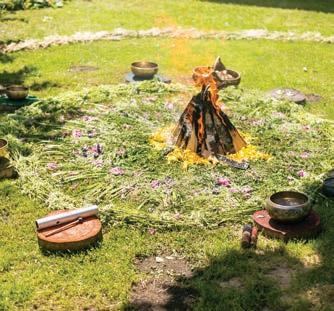
Communities of old were created and bound by a collective ethos that included a common ethnicity and geography, as well as shared religious beliefs and traditions. Gathering around the fire combined the needs of survival with stories and song that ignited generations with spiritual sustenance.
In our modern Western world, we sit amid the ruins of what community used to be. Our tapestry of human bonds is becoming threadbare beneath the weight of overly scheduled lives, screen distraction and social divisions. Despite having constant contact with others on our phones, newsfeeds and online conference rooms, we may sometimes feel like lone travelers across a tundra of isolation.
In nature, symbiotic relationships between fungi and trees, flowers and insects, and certain species of animals are the foundation of life. As much as 70 percent of forest flora
depend upon winged creatures for pollination, and lichens are often composed of three organisms living together harmoniously.
As we go through the workday, drive the kids to practice and scramble to get dinner on the table, it is easy to forget that we, too, are part of the natural order. Fostering lifenourishing connections helps us to cope and thrive, while prioritizing openness can become much-needed soul medicine.
Summer days are often treasured for the memories we make with those we love, yet to-do lists loom over our heads as August winds down. This year, let’s take the spirit of summer into the cooler months and vow to spend quality time with loved ones, mend the broken threads in our relationships and enjoy each other’s company in the present moment. We can choose to appreciate everyone—from the supermarket cashier to the family dentist—and see their worthy contributions interwoven in our own lives. In doing so, we might remember our own invaluable roles in the fabric of life.
To rekindle and build community, join a local group or class to share a passion; chitchat with someone while standing in line at the grocery store; or invite a neighbor to spend quality time together. Take every opportunity to make a connection.
Marlaina Donato is an author, painter and composer. Connect at BluefireStudio.art.
Lelde Feldmane-Zajarska/Shutterstock
Protecting Waterways
How Individuals Can Make a Real Difference
by Kelcie Ottoes
The biblical adage that all rivers lead to the sea is one way of saying that all water is connected. This natural design moves water from one place to the next, which means that polluting or littering along one creek eventually pollutes all waterways.
According to the Ocean Conservancy, 11 million metric tons of plastic enter the ocean each year, joining an estimated 200 million metric tons already circulating there. While many organizations and individuals engage in waterway cleanups on Earth Day in April, attention is needed the rest of the year, too.
Clean waterways support healthy ecosystems, beautify outdoor spaces, provide a safe habitat for wildlife and improve outdoor recreational experiences. We can all play an impactful role in keeping waterways clean.
Getting Started
Most litter is found along the water’s edges, beaches, walking paths and parking areas. By committing to consistently keeping a section of waterway clean, we can deter others from littering in the area. “Studies have found that clean places stay cleaner,” says Lauren Berent Burgess, engagement director of Denver, Colorado’s The Greenway Foundation, a nonprofit steward of the South
Platte River. “Something in our mentality will stop us from destroying a place that looks nice. We feel less guilty littering somewhere there is litter already. You can always keep a waterway clean by maintaining it.”
The U.S. Environmental Protection Agency provides information online about actions to take around the house and in the community to support waterways. To learn more, visit epa.gov/urbanwaterspartners/how-youcan-help. Also consider joining a local nonprofit that hosts cleanups, including Adopt a Beach, Ocean Conservancy, Keep America Beautiful, Waterkeeper Alliance and American Rivers.

“If you know somewhere is going to flood, clean up the area before it happens and while water levels are still low to prevent the trash from being swept away,” says Callie Schaser, the communications specialist at Living Lands & Waters, a river cleanup organization headquartered in Illinois. “They may seem small, but picking up items like cigarette butts can have a big impact, especially because of all the contaminants that are in the filter. One cigarette filter can pollute up to two gallons of water before the contaminants are gone.”
Safety Tips
• Ensure minors are accompanied by an adult.
• Check the forecast for rain, flood warnings and high tides.
• Respect nature and leave wildlife alone.
• Do not enter high water.
• Exercise extreme caution when picking up anything sharp, hazardous or excessively heavy.
What to Bring to a Cleanup
• Drinking water
• Snacks
• Trash pickers
• Work gloves
• Closed-toed shoes
• Rain jacket
• Long sleeve shirt
• Long pants
• Hat
• Sunscreen
• Bug spray
• Trash and recycling bags
• Hand sanitizer
• Safety vest
The Impact of Organized Action
When individuals get organized, work together and execute cleanups consistently over time, their collective impacts can be transformative. The Ocean Conservancy has collected almost 349 million pounds of trash since 1986. Living Lands & Waters has cleaned up 25 rivers in 21 states and hosted 1,400 community-based cleanups that have removed more than 13 million pounds of trash since 1998. American Rivers has cleaned up 32.5 million pounds of litter and debris with the help of 1.3 million volunteers covering 261,000 miles of waterways since 1991.
Other Ways to Maintain Waterways
• Generate less trash by consuming less.
• Ensure local trails and parks have trash, recycling and compost bins.
• Eliminate single-use plastic, one of the largest contributors to waterway pollution, according to both Burgess and Schaser.
• Encourage others to take ownership of their trash and local waters.
• Persuade businesses and local groups to
adopt sections of waterways and commit to keeping them clean.
• Support farmers using regenerative practices that do not contribute to chemical runoff.
Kelcie Ottoes is a copywriter and content creator specializing in sustainability and environmental topics. She is a frequent contributor to Natural Awakenings.



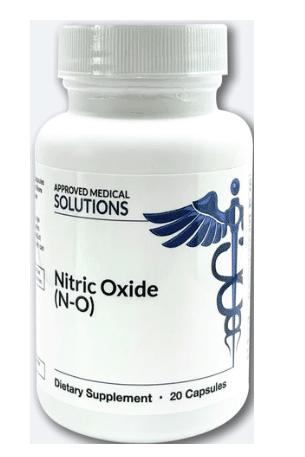

The Power of Healing Circles
Resilience and Enjoyment in Nurturing Company
by Maya Whitman
Throughout history, cultures around the globe have used the circle to represent wholeness, vital energy and community. When humans of like hearts gather in a circle, this timeless geometric symbol becomes embodied, lessening the space between individuals. In today’s challenging times, healing circles echo ancient traditions by offering support from the deep well of human bonds. People from all walks of life are coming together to tap into their own healing potential by picking up a hand drum, sharing the cancer treatment journey, dancing to tribal beats or expressing the deeper self with colorful paints.
Circles with inspired focus can help us navigate the rough waters of addiction, grief, illness and transitions by breaking down the protective walls we so often build in the name of survival. “We humans are a social species, and whether you are extroverted or introverted, the experience of belonging amongst others brings an impactful sense of purpose,” says Natalie Lain, executive director at Amethyst Retreat Center, in Duncannon, Pennsylvania. She relates that seeking communal bonds in gatherings like ecstatic dance events isn’t about covering up hardship with false positives, but rather finding grace by “cultivating a foundation of inner strength and ease.”
Drumming Through Tough Times
Inspired by diverse cultural traditions, drum circles are offered at medical centers, hospitals and nursing homes for people with
cancer, Parkinson’s disease and other neurological disorders, brain injuries, post-traumatic stress disorder, dementia and viralbased illnesses, including AIDS. In a 2001 study at an outpatient medical facility in Pennsylvania, researchers found that group drumming that followed a music-therapy protocol boosted the body’s natural killer cell activity and lowered the stress response among participants. Japanese research published in 2020 in Frontiers in Aging Neuroscience shows that drumming communication programs help older people with dementia experience improved cognitive function and body composition.
Family members and caregivers can find much-needed relief by releasing challenging emotions through rhythmic drumming. “It’s been very rewarding hosting drum circles with those navigating dementia and Alzheimer’s disease,” says Laura Cerrano, a reiki practitioner and healing drum circle facilitator in New York City and Long Island. “We’ve seen improved social interactions, joy, acknowledgment, feeling more present and restoring dignity.”
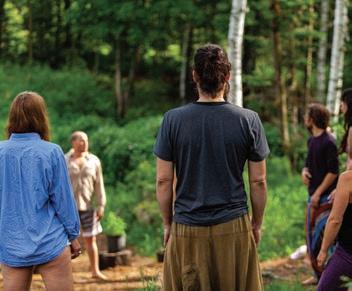
A Place To Be Ourselves
Some healing circles use the arts for selfexpression and restorative benefits. In such settings, it is not necessary to aim for excellence or have any special talents; simply being present in the moment will suffice. Whether it’s a free-form dance gathering or painting session, the main objective is being in our skin, and this, Cerrano notes, initiates “a greater capacity for heart-to-heart connections and healing.”
Lain concurs, saying, “Creative healing circles are all about learning how to accept ourselves as we are and remembering to nurture our inner child. We open up our hearts in these circles and let ourselves experience the joy of pure expression, shedding layers of self-criticism and competitiveness.”
Expanding our capacity to love is a running thread through cacao ceremonies— gatherings that incorporate the consumption of unadulterated chocolate in its purest form, often prepared as a warm, frothy beverage. In the ancient Americas, cacao was used both ceremonially and medicinally. Modern cacao circles are highly diverse and go beyond religious structure. Often interwoven with music, dance, prayer or meditation, these gatherings inspire reflection and self-exploration.
Online circles can also provide deep emotional sustenance, especially for those unable to attend local events. Cerrano, who has been hosting reiki circles since 2014, saw a need to expand virtually when the world came to a halt in 2020. “The pandemic inspired me to provide weekly virtual reiki circles because people needed a place to gather, feel safe and be heard.”
Whether online or in the neighborhood, healing circles offer something for everyone, and starting up a circle can be just as rewarding. “One of the most important things as a host of mindfulness-focused events is to embody the idea that we are all each other’s teachers,” advises Lain. “It’s important to create an inviting, safe space within your group where people can feel at ease and let their guard down.”
Maya Whitman is a frequent writer for Natural Awakenings.



















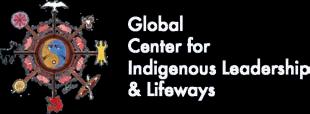


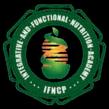


thanks you









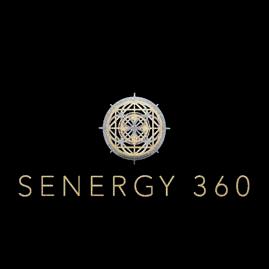


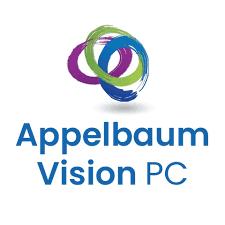
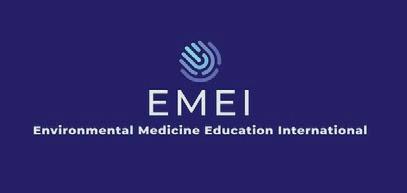






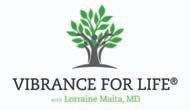











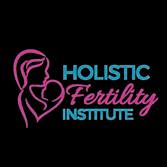



Pet Posse
Building a Network Around Our Animal Companions
by Ruth Roberts, DVM, CVA, CVH, CVFT, NAN
Like the African proverb “It takes a village to raise a child,” it takes a village to raise a pet, too. Pet ownership involves much more than just feeding and walking them. It requires a holistic approach that includes training, socialization, health care and emotional well-being. A supportive community can play a crucial role in raising a pet by offering a diverse set of skills, resources and advocations that contribute to their comprehensive care.
Pets Build Community
A 2017 study across urban sites in the U.S. and Australia found that pet owners
have significantly higher “social capital” than non-pet owners. Defined as the “connections among individuals, social networks, and the norms of reciprocity and trustworthiness that arise from them,” social capital is crucial for community well-being.
The study describes how pets can facilitate social interactions, acting as catalysts for building social networks and fostering a sense of community. Such interactions extend beyond simply breaking the ice between strangers; they contribute to a wider social trust and the ties that bind communities together.
A recent report by Mars Incorporated, makers of human and pet food, highlights the power of pets to bring people together and alleviate the loneliness epidemic. Nearly nine in 10 adults say pets are one of the easiest conversation-starters, and pet parents say pets made them more familiar with their neighbors (85 percent) and more invested in their community (70 percent).
Benefits of a Pet Community
A supportive pet community enhances the quality of life for pets and their owners.
• Socialization for Pets and Owners: Pets need social interaction to thrive. Regular playdates, dog park visits and community events help pets interact with other animals, improving behavior, reducing anxiety and boosting happiness. For owners, these gatherings can foster lasting friendships and a supportive network.
• Shared Knowledge and Resources: Experienced pet owners share advice on training techniques, veterinarians, pet-sitting services, groomers and petfriendly activities, helping pets receive the best care.

• Emotional Support: Pet ownership can be challenging. A community offers much-needed emotional support, empathy and practical advice during difficult times, such as dealing with a sick pet or behavioral issues.
• Active Lifestyle: Pet communities promote an active lifestyle that includes group walks, hiking clubs and outdoor events that keep pets and owners physically healthier and happier.
• Advocacy and Education: Pet communities organize events for spaying and neutering, raise awareness about pet adoption and host workshops on pet care. These efforts contribute to the wellbeing of pets and promote responsible pet ownership.
Finding the Right Tribe
Joining a meetup hosted by a dog park or local pet club is an excellent starting point to find a pet community nearby. Websites like Meetup and Facebook help connect pet owners in the area. Online communities, including breed-specific forums and pet care groups, offer platforms to share experiences, seek advice and build friendships worldwide. Social media platforms like Instagram and TikTok also host vibrant pet communities.
Veterinary clinics and pet stores often act as local pet community hubs, hosting events and providing bulletin boards for announcements. Participating in pet-friendly festivals, charity walks and adoption fairs offers great opportunities to meet other pet owners and learn about local resources. These activities not only help in finding a pet tribe, but also enhance a pet’s social life and well-being.
The right pet community includes professionals such as veterinarians, pet trainers and nutritionists to provide access to high-quality, accurate and reliable information and support. These experts stay updated with the latest research and best practices, allowing pet owners to benefit from the most recent advancements in pet care.
Building a Strong Community
If an existing community doesn’t fit specific needs, consider organizing personal events. Starting a weekly dog walk, hosting a pet playdate in the backyard or planning a pet-friendly picnic can create a supportive network of pet owners with shared interests. Volunteer ing at animal shelters, rescue organizations or pet adoption events is another excellent way to connect with other passionate pet owners while contributing to a worthy cause.
The power of community in pet ownership is undeniable. Embrac ing the collective care model ensures a healthier, happier and more connected life for all involved.
Ruth Roberts is an integrative veterinarian and holistic health coach for pets, as well as the creator of The Original CrockPet Diet. Learn more at DrRuthRoberts.com.


NATIONAL PRODUCT PICKS

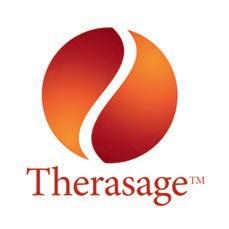
Therasage is the gold standard for energy healing, naturally healing infrared, negative ions and eliminating EMFs.
Therasage.com
Scan to register for educational webcast to learn more.

A NEW fun and interactive series dedicated to the health and well-being of Preschoolers and their families. WORLD MUSIC, MOVEMENT, MINDFULNESS,

CREATIVE PLAY, TIME IN NATURE, & POWER OF THE HEART! SUBSCRIBE today!
Scan to learn more and subscribe.


Founded in 1932, Boiron, the world leader in homeopathic medicines, is best known for its popular Arnicare® line of pain relievers and Oscillococcinum® flu reliever.
BoironUSA.com
Save 20% with code NA20

OB/GYN-formulated Rejuvenates vaginal tissue, restores natural moisture, and helps prevent bladder leaks.


DrAnnaCabeca.com/ products/julva

Overcoming Generation Z Loneliness
Prioritizing Human Interactions Over Screen Time
by Thais Harris, BCHN
Generation Z, defined as those born between the mid-1990s and early 2010s, has grown up in a digital era characterized by constant connectivity, yet accompanied by profound isolation. The pervasive use of social media, economic uncertainty, hybrid work environments, climate change anxiety and societal pressures contribute to this sense of loneliness.
The Cigna U.S. Loneliness Index found that nearly eight in 10 Gen Zers (79 percent) are lonely. Schools reported that between 2012 and 2018 nearly double the number of high school students worldwide expressed a sense of loneliness compared to the previous decade. According to the U.S. Surgeon General, loneliness is associated with a greater risk of cardiovascular disease, dementia, stroke, depression,

anxiety and premature death. Those that experience social isolation have a 32 percent higher risk of early death.
A leading theory for this phenomenon is that 2012 was the first year when more than 50 percent of Americans had access to a smartphone, and the use of social media platforms reached critical mass. While these platforms offer connection, they often lack the depth and authenticity required for meaningful relationships. They give us the illusion of being connected while having our heads down, focused on our devices and ignoring the people and experiences around us. The curated nature of online profiles also can foster feelings of inadequacy and increasing loneliness.
To address this epidemic, it is essential to focus on creating environments that encourage genuine interactions and a sense of belonging. Understanding our needs and triggers, while also nourishing a sense of connection from within, can open the possibility to greater social connection and deeper interactions in the world. Here are some strategies:
Engage in community. Active participation in local activities can significantly reduce feelings of isolation. Volunteering, joining clubs or participating in neighborhood events foster a sense of purpose and connection. Engaging in community service can enhance social networks and provide emotional support while helping others.
Share interests and hobbies. Finding and participating in groups centered around shared interests can lead to deeper connections. Whether it’s a book club, sports team or foreign language class, these gatherings offer opportunities for meaningful interactions and friendships. Researchers from The University of Queensland, in Australia, found that engaging in activities that align with personal interests helps to form a coherent social identity and reduces feelings of isolation.
Talk to strangers. Contrary to what older generations taught their children, talking to strangers is not necessarily a dangerous endeavor. It might seem easier to interact with our devices than start a conversation with someone new, but the results of the latter provide a greater sense of well-being and a feeling of belonging. Happier people spend more time talking to others, and when people have more conversations with others, they report being happier.
Be authentic, kind and open. Building genuine relationships requires authenticity. Being open and honest about our feelings and experiences fosters trust and deeper connection. When unsure about what to say, a random act of kindness can profoundly impact the day for the better, creating a ripple effect in the community.
Start from within. “Our epidemic of loneliness corresponds to an epidemic of self-neglect. This isn’t just about being out of touch with others, but with our own body’s needs. Screen time can invade the space for adequate sleep and movement, leading to less resilience and reduced immunity,” says Peter Sholley, a psychotherapist in Massachusetts. “The gut biome is directly implicated, affected by low-nutrition foods, antibiotics, and sleep and exercise deficiencies. Many studies point to a connection between a compromised gut biome and lack of microbial diversity with an increase in depression and anxiety.”
The Power of Community
A strong, in-person community provides a support system, reduces stress and promotes overall well-being. To combat the loneliness epidemic among Generation Z, we can start by extending a kind greeting to everyone we meet—on a bus, in the classroom or in the checkout line.
Thais Harris is a holistic nutritionist and author. Learn more at NourishTogether.com.
Calendar of Events
NOTE: All calendar events must be received via email by the 10th of the month and adhere to our guidelines. Email Regina@NARichmond.com for guidelines and to submit entries. No phone calls or faxes, please. Or visit NARichmond.com to submit online.
SATURDAY, AUGUST 3
Herbs, Teas, and Infusions Workshop –4:30-6:30pm. You will discover different ways to use herbs and incorporate them into your daily routine. We'll sample some examples in class. You'll get to make your own iced tea and sun tea blends as well as infused oils and vinegars. Register at https://tinyurl.com/ycxx8k2v. Lakeside Farmer’s Market. 6106 Lakeside Avenue Henrico, VA. $65.
SATURDAY, AUGUST 10
Goat Yoga on the Farm with Holly –11:30am-12:30pm. Gentle hatha yoga with 8, 3-month-old baby goats. Open to all! Enjoy a light brunch with farm-grown watermelon after! 804-615-3261 Register at https://tinyurl.com/2vyz59a6 Mason Estates Farm LLC 14084. Horseshoe Bridge Rd. Ashland, VA. $35.
PLANS CHANGE
Please call ahead to confirm date and times

SUNDAY, AUGUST 11
Aloha Flow at Island Shrimp Co – 1010:45am. Start your Sunday off to a relaxing start with a fun 45-minute yoga flow overlooking the James River with complimentary local coffee afterward. Island Shrimp Company at Rocketts Landing 11 Orleans Street Richmond, VA. Registration is encouraged at https:// tinyurl.com/494aazmw. $10.
SATURDAY, AUGUST 24
Group Reiki – 11am-1pm. We invite you to experience the power of reiki offered by The Collective; a group of Reiki Master practitioners, offering you access to the healer within and around you. Through guided meditation we enter an energetic container and experience peace as we hold space for others and receive individual reiki treatments ( 7-10 mins), followed by group processing to close out the transformational experience. 804359-0384 Register at InnerworkC enter. org. Innerwork Center. 213 Roseneath Rd. Richmond, VA. $19+.
Emotional
Healing
Coming in September

Ongoing Events
Sunday
Rescue Dog Hike – 7:45-10am. Old Dominion Humane Society (ODHS) hosts hikes with its resident rescue dogs led by knowledgeable and dedicated volunteers, and the public (adults and children) is invited to join in on the fun and exercise for both humans and four-legged friends. No experience is necessary to go on the hikes, and the age to walk dogs is 16 and up. Hikers meet at the ODHS center at 3602 Lafayette Boulevard in Fredericksburg, VA. OldDominionHumaneSociety.
5Rhythms Movement Meditation – 11am12:30pm. Journey of movement practice, music and community. $20. TurnRVA. 3105 W Moore St. Afterbefore.live.
Goat Yoga Brunch & Bubbly – 11:30am1:30pm Pactamere Farm and Goat Yoga RVA are hosting morning goat yoga followed by a delicious brunch with unlimited mimosas. During the 45 minute class, your certified instructor will guide you into a series of poses with the assistance of our 26 Nigerian dwarf goat yogis. Pactamere Farm 15577 Stone Horse Creek Rd Glen Allen, VA Tickets available at PactamereFarm.com. $65.
Monday
Level 2 Flow Yoga – 9-10:15am. Start your week right with a yoga class that is beyond a beginner’s level. Participants will incorporate new poses and increasingly challenging options. $70/4 classes/mo, $20/drop-in.Glenmore Yoga & Wellness Center, 10442 Ridgefield Pkwy, 804-7415267. GlenmoreYoga.com.
Ageless Yoga – 10:30-11:45am. A balanced practice that incorporates basic yoga postures, breath awareness and relaxation. Poses are modified to meet individual needs. Students transfer to and from the floor and the class generally includes a vinyasa flow of standing poses, guided by breath for a portion of class time to increase stamina and strength. Students continue to develop body awareness to keep the joins safe, increasing range of motion and improving balance. Glenmore Yoga & Wellness Center, 10442 Ridgefield Pkwy. 804-741-5267. GlenmoreYoga.com.
Beginner Qigong with Jonah Marsh - 5:306:45pm. Qigong is an ancient practice which combines graceful movements with abdominal breathing and mindfulness, allowing us to connect with Nature and balance the body’s circadian rhythms. Jonah has been studying Chinese internal martial arts and qigong since 2011. $5-$25 sliding scale. LivingWaterrva.com 1000 Westover Hills Blvd Richmond, VA.
Creative Wink – 5:30-7pm. Join us for a transformative program designed to nurture your creative spirit. Through engaging activities such as simple art, writing, movement, and interactive games, you’ll be guided to tap into your innate sense of childlike wonder. 804-
359-0384 Register at Innerworkcenter.org Innerwork Center 213 Roseneath Rd. $74+.
Tuesday
Aerial Yoga – 9-10am. This beginnerfriendly class for adults of all ages combines traditional yoga with the support of a suspended silk hammock. You will be guided through a series of poses and flows designed to strengthen, lengthen, and open the body, leaving you feeling confident, connected, and relaxed. $20 Host of Sparrows Aerial Circus, 97 Manchester Road, Richmond, VA. 804615-0309. HostOfSparrows.com.
Beginner-Level Yoga – 9-10:15am. Balanced practice that incorporates basic yoga postures, breath awareness & relaxation. Postures modified to meet individual needs. Online & in-person. $70/4 classes/mo, $20/drop-in. Glenmore Yoga & Wellness Center, 10442 Ridgefield Pkwy. 804-741-5267. GlenmoreYoga.com.
Yoga for Bone Health – 9:45-11am. Increase bone & muscle through the use of yoga with a combination of dynamic & static yoga poses. Chris Riely. $70/4 classes/ mo, $20/drop-in. Glenmore Yoga & Wellness Center, 10442 Ridgefield Pkwy. Registration required: 804-741-5267 or GlenmoreYoga.com.
Fundamentals Pilates Mat Class – 10:45am12pm. This Pilates Mat Class with Dianne Powers will include the basic exercises emphasizing alignment, elongation of the spine and healthy posture. It will focus on the execution of efficient movement achieving improved core strength and endurance. $70/4 classes/mo, $20/dropin. Glenmore Yoga & Wellness Center, 10442 Ridgefield Pkwy. 804-741-5267. GlenmoreYoga.com.
Slow and Gentle Yoga – 11:30am-12:45pm. An in-studio or online class with a yoga therapist. $70 for 4 classes in a month; $20 drop-in. Glenmore Yoga & Wellness Center, 10442 Ridgefield Pkwy. 804-741-5267. GlenmoreYoga.com
Mixed Level 1 & 2 Yoga – 5-6:15pm. This Mixed Level 1 & 2 yoga class is both instudio and online. End your work day with this yoga class that will move through all the muscles and joints, transitioning from beginner yoga poses into more challenging poses. If joining online, please register in advance to get the Zoom link. $70/4 classes/mo, $20/drop-in. Glenmore Yoga & Wellness Center, 10442 Ridgefield Pkwy. 804-741-5267. GlenmoreYoga.com.
Tuesday Night Gentle Flow into Restoration – 6:30-7:30pm. A nourishing and relaxing 60-minute gentle hatha yoga flow with restorative yoga poses (using props). Suitable for any level, sliding-scale, drop-in & props provided. Leave feeling relaxed, restored & rejuvenated. Like all Living Water classes, this one is sliding scale, $5-$25. Living Water Community Center. 1000 Westover Hills Blvd. LivingWaterrva.com/events.
Men’s Grief Discussion – 1:30-3pm This group is peer led, free and a place to listen or share grief experiences with others with similar grief experiences. Open to anyone that has lost a significant othe r or spouse. Bliley’s Funeral Home 3801 Augusta Avenue Richmo nd, VA. 804-355-3800.
Wednesday
Yin Yoga (In Studio & Online) – 9-10:30am. This quiet practice with Erin Forsyth, ERYT 500, focuses on the deep connective tissue in the lower back, hips and pelvis. Poses are generally limited to seated or reclined. The poses apply passive pressure to the joints, ligaments and tendons and are held for 3 to 5 minutes. While holding, students practice staying mentally attentive by focusing on the breath and to what their body feels in the pose. For the online class, please register in advance to get the Zoom link. Glenmore Yoga & Wellness Center, 10442 Ridgefield Pkwy. 804-741-5267. GlenmoreYoga.com $20.
Yin Yoga with Erin Forsyth – 9-10:30am. This quiet practice, offered in-studio and online, focuses on the deep connective tissue in the lower back, hips and pelvis. Poses are generally limited to seated or reclined. While holding the pose for a period of time, students practice staying mentally attentive by focusing on the breath and to what their body feels in the post. If attending online, please register in advance to get the Zoom link. $70/4 classes/mo, $20/drop-in Glenmore Yoga & Wellness Center, 10442 Ridgefield Pkwy. 804-741-5267. GlenmoreYoga.com.
Intermediate Flow Pilates Mat Class – 9:1510:30am. A Pilates mat class with a focus on intermediate mat exercises. $70/4 classes/mo, $20/drop-in. Glenmore Yoga & Wellness Center, 10442 Ridgefield Pkwy. 804-741-5267. GlenmoreYoga.com.
Ageless Yoga – 10:45am-12pm. A balanced practice that incorporates basic yoga postures, breath awareness and relaxation. Poses are modified to meet individual needs. Students transfer to and from the floor and the class generally includes a vinyasa flow of standing poses, guided by breath for a portion of class time to increase stamina and strength. Students continue to develop body awareness to keep the joins safe, increasing range of motion and improving balance. $70/4 classes/mo, $20/drop-in. Glenmore Yoga & Wellness Center, 10442 Ridgefield Pkwy. 804-741-5267. GlenmoreYoga.com.
Gentle Yoga – 11am-12:15pm. This class features gentle yoga stretches, postures, breath awareness and relaxation to improve flexibility, strength, range of motion, balance and energy. Designed for those recovering from injuries, illness, inactivity or other health considerations. $70/4 classes/mo, $20/drop-in. Glenmore Yoga & Wellness Center, 10442 Ridgefield Pkwy. 804-741-5267. GlenmoreYoga.com.
Vino Vinyasa – 12-1pm Join instructor Ann Marie Lewis for a strong yoga practice that will leave you feeling revitalized on every level! Rinse out your body and mind with
a dose of structural, functional flow yoga at beautiful Ashton Creek Vineyard. You are encouraged to stay after class to enjoy some locally produced wine and nibbles! Bring a yoga mat, 2 blocks and a strap. Ashton Creek Vineyard 14501 Jefferson Davis Hwy Chester, VA. 804-536-5869. $15.
Thursday
Aerial Yoga – 9-10am. This beginnerfriendly class for adults of all ages combines traditional yoga with the support of a suspended silk hammock. You will be guided through a series of poses and flows designed to strengthen, lengthen, and open the body, leaving you feeling confident, connected, and relaxed. $20 Host of Sparrows Aerial Circus, 97 Manchester Road, Richmond, VA. 804615-0309. HostOfSparrows.com.
Vinyasa Flow – 9-10:15am. Join Glenmore Yoga’s Randi Weiss, E-RYT 500, for an inperson or online Vinyasa Flow class that incorporates all aspects of a traditional Hatha yoga class – postures, breath & meditation while challenging your coordination through flow. Please register in advance. $70/4 classes/mo, $20/dropin. Glenmore Yoga & Wellness Center, 10442 Ridgefield Pkwy. 804-741-5267. GlenmoreYoga.com.
Intermediate Vinyasa Flow – 9:1510:30am. Incorporates all aspects of a traditional hatha yoga class: postures, breath & meditation, while challenging the coordination through flow. In-person & online. $70/4 classes/mo, $20/dropin. Glenmore Yoga & Wellness Center, 10442 Ridgefield Pkwy. 804-741-5267. GlenmoreYoga.com.
Postnatal Yoga – 10-11am. Gently reconnect with your breath, pelvic floor, and abdominal muscles. We recommend that you begin this practice after your care provider has cleared resumption of physical activity. While this class is not made to directly incorporate infants they are welcome to attend with you until they start to crawl. MyBirth, 1726 Altamont Ave, Suite 4. Mybirthrva.com/yoga $16.
Chair Yoga – 10:30-11:45am. This online Chair Yoga class via Zoom for older adults offers a balanced yoga practice which incorporates basic yoga postures, breath awareness and relaxation. Students continue to develop body awareness to keep the joints safe, increase range of motion and improve balance. Please register in advance to get the Zoom link. GlenmoreYoga.com.
Fundamentals Pilates Mat Class – 10:45am12pm. This Pilates Mat Class with Dianne Powers will include the basic exercises emphasizing alignment, elongation of the spine and healthy posture. It will focus on the execution of efficient movement achieving improved core strength and endurance. $70/4 classes/mo, $20/dropin. Glenmore Yoga & Wellness Center, 10442 Ridgefield Pkwy. 804-741-5267. GlenmoreYoga.com.
YOGAbility – 11am-12:15pm. This in-studio therapeutic yoga class is designed to educate, assess and help you progress in everyday life skills including functional abilities of work, rest and play. Highlighted are abilities of aligned posture, dynamic balance and increased mobility. Glenmore Yoga & Wellness Center, 10442 Ridgefield Pkwy. 804-741-5267. GlenmoreYoga.com $20.
Online Beginner Yoga – 6-7:15pm. A balanced practice that incorporates basic yoga postures, breath awareness and relaxation. Postures are modified to meet individual needs. Please register in advance to get the Zoom link for this online class. Glenmore Yoga & Wellness Center, 10442 Ridgefield Pkwy. 804-7415267. GlenmoreYoga.com.
Sound Bath at the Innerwork Center –6-7pm. June 6 and June 20. Surrender to the stillness and allow sound to heal your body and mind. 804-359-0384 Register at Innerworkcenter.org Innerwork Center 213 Roseneath Rd. Richmond, VA $20+.
Friday
Yin Yoga – 9-10:15am. This 75-minute instudio Yin Yoga class is a great way to end the week. The quiet practice focuses on the deep connective tissue in the lower back, hips and pelvis. Poses are generally limited to seated or reclined. The poses
apply passive pressure (muscularly soft) to the joints, ligaments and tendons and are held for 3-5 minutes. Glenmore Yoga & Wellness Center, 10442 Ridgefield Pkwy. 804-741-5267. GlenmoreYoga.com $20.
Level 1 & 2 Yoga – 10:45-12pm. This instudio traditional yoga class takes students beyond the beginner level. The class will flow through poses and include more challenging options, ending with a relaxation session. $70/4 classes/mo, $20/ drop-in. Glenmore Yoga & Wellness Center, 10442 Ridgefield Pkwy. 804-741-5267. GlenmoreYoga.com.
First Friday Art Walk at Gallery5 – 5-10pm. Free admission on 1st Fridays. Art, performers, live music, food, vendors, and more! Gallery5 continues to be a catalyst for new creative initiatives & serves as a launching pad for emerging artists & area nonprofits. Gallery5, 200 W Marshall St. 757-773-7618. Gallery5Arts.org.
Saturday
Mixed-Level Yoga – 9-10:15am. Start the weekend off right w/a yoga class appropriate for all levels. Guidance given throughout practice, offering individual students a number of appropriate options. In-person & online. $70/4 classes/mo, $20/ drop-in. Zoom. Register, Glenmore Yoga, 804-741-5267 or GlenmoreYoga.com.

Community Resource Guide
Connecting you to the leaders in natural health care and green living in our community. To find out how you can be included in the Community Resource Guide, email Regina@NARichmond.com to request our media kit.
Chiropractor
DRS. MAXINE AND JOE ABRETSKI
Omni Family Chiropractic 6806 Patterson Ave. Richmond, VA 23226 804-214-6236
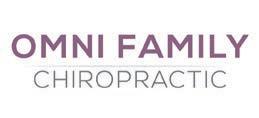
om
We specialize in family-based wellness health care, focusing on correcting the structure of the spine and the function of the nervous system. Our goal is to help families live to their healthiest potential naturally. By addressing spinal alignment and nervous system health, we aim to enhance overall well-being and support longterm health!
Concierge Medicine
WELLCOMEMD
2500 Gaskins Rd, Ste A 866-942-4522 · WellcomeMD.com infoRichmond@WellcomeMD.com

Experience concierge medicine with a functional medicine approach. Comprehensive and proactive, limited number of patients, unhurried 30-minute consultations for a personal and effective relationship with your physician. Schedule a discovery call today.
Counseling
LINDA ZAFFRAM, LCSW, CYT200, PMH-C
Healing Circle Counseling 2819 N. Parham Road, Suite 130 Richmond, VA 23294
804-924-7600
HealingCircleCounseling.com

Linda Zaffram is the founder, owner and CEO of Healing Circle Counseling and Services. Linda’s areas of expertise include adults, women’s issues, depression, panic/anxiety, PTSD, grief/ bereavement, perinatal loss/ stillbirth/miscarriage, perinatal mood disorders, maternal mental health, fertility/reproductive issues, NICU families, emotional, physical & sexual abuse, trauma, birth trauma, stress management, relationship issues, life transitions, communication skill building and developing coping skills. See ad, page 7.
Counseling/ Neurofeedback
CHERYL DESVERNINE
Braniac Wellness
804-250-3450
BraniacWellness.org

Cheryl is board-certified (BCN) in neurofeedback and has been practicing neurofeedback over the last eight years. We offer neurofeedback, eye movement therapy and traditional counseling to clients ages 6 and up. Neurofeedback is an intervention that improves symptoms associated with ADHD, anxiety, panic, PTSD, trauma, depression and more that is holistic and does not require medication.
(Biological/Holistic)
NEIGHBORS AND HEROD FAMILY DENTISTRY
Dr. Brian Herod 1009 Crowder Dr., Midlothian, VA 23113 804-794-8745 • MidloDental.com

Dr. Brian Herod centers his holistic dentistry practice on the connection between oral and systemic health. He is a member of the IAOMT, providing an integrative approach to dental care. Safe amalgam removal, metal and BPA-free fillings, ceramic implants, biocompatibility testing, fluoridefree, 3-D cone beam.
Doctors
NANCY A. POWELL, M.D.
River’s Way Healthcare of Virginia 5500 Monument Ave, Ste T 804-379-4560
RiversWayHealthcareVA.com RiversWayVA@gmail.com

Offering expanded healing services. Providing traditional primary care and alternative approaches to support the body’s ability to heal itself. Extensive study in the mind-body connection to achieve optimal health. Certified by the Board of Family Medicine and by the American Board of Scientific Medical Intuition.
Holistic Gynecology
VERA DUBOVOY, M.D.
Dubovoy Integrative Health 1404 Starling Dr., Richmond, VA 23229 (Inside the Wellness Village) 757-603-3034
VAIntegrativeHealth.com
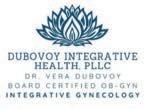
Vera Dubovoy, M.D., is dual board-certified in OB-GYN and Lifestyle Medicine. She has over 1,000 hours of training in integrative medicine and functional medicine including health and wellness coaching, nutrition, and herbal medicine. She believes in personalized wellness and nourishing our physical, emotional and spiritual health. She and her husband offer a range of progressive therapies designed to fit the treatment needs of the patient.
Insurance
PCM INSURANCE AGENCY
Patricia Mayfield PCMInsurance19@gmail.com 1-800-674-6771
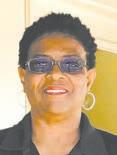
PCM Insurance is your premier destination for Medicare enrollment services. With decades of experience in the industry, our dedicated team of experts is committed to helping individuals navigate the complexities of Medicare with ease. See ad, page 2.
Laser Therapy
HEALTH INSYNCS
9210 Forest Hill Ave, B-3, Richmond 804-377-2222
HealthInsyncs.com

Laser therapy can reduce the pain and swelling of strained muscles and tendonitis, irritated discs and inflamed nerves, and can stimulate tissue repair and regeneration from old and new injuries. See our website for mor e information about laser therapy. See ad, page 11.
Massage Therapy
ESCAPE MASSAGE
15500 WC Commons Way, Midlothian 804-794-0445
EscapeMassage.com
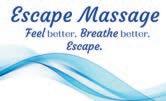
We offer a variety of massages including Swedish, Therapeutic Swedish, Deep Tissue, Hot Stone, Aromatherapy and CBD. We also offer energy therapy, reiki and halotherapy services. We have a team of professional, experienced, and caring licensed massage therapists and reiki masters ready to cater to your self-care needs. See ad, page 11.
RESETTING TOUCH
MOBILE MASSAGE
571-207-6717
MassageBook.com/biz/resetting-touch
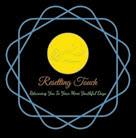
Offering massage services at your location with options including Swedish, Deep Tissue, Trigger Point, Sports, and M.M.A. (Mixed Massage Arts). Couple these services with aromatherapy, CBD, cupping, and guided stretches for full body relaxation. Schedule an appointment today. See ad, page 2.
Medical Cannabis Provider
NARITA C. SNEAD, MPH, MSN, APN-BC
Certified Medical Cannabis Provider
Adult Nurse Practitioner
Registered Practitioner for Medical Cannabis
804-475-8904
Green-Healing.co

Find relief from chronic pain, anxiety and other health conditions with our Medical Cannabis Certification. Get your valid written medical cannabis certification card today. Unlock the natural healing properties of medical cannabis.
Natural Medicine
MAGNOLIA WELLNESS
Regina Rudolph MagnoliaWell@gmail.com
804-495-0325
Wellness-Teas.com
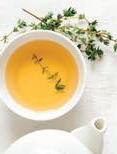
Promoting self-care and disease prevention through the use of our crafted collection of premium wellness teas designed to reduce stress and anxiety, strengthen the immune system, promote weight loss and release harmful toxins. Magnolia Wellness also assists people on their journey to better health and wellness through classes and private sessions. See ads, pages 4 & 16..
Naturopathic Doctor
DR. MICAH ALLEN, ND, LAC, FABORM
Essential Natural Health
804-464-3315
DrMicahAllen.com

Dedicated to providing personalized holistic healthcare solutions in Richmond, Virginia. Our practice focuses on integrating time-tested acupuncture techniques with innovative medical solutions to achieve significant and enduring results for our patients. Specializing in challenging chronic conditions such as peripheral neuropathy, infertility and pain, we strive to help individuals live fulfilling lives. At Essential Natural Health, we prioritize understanding each patient as a whole person. We develop customized preventive and natural medicine health plans for all ages, from pediatrics to geriatrics. Our approach is grounded in harnessing the body's inherent healing abilities through tailored treatment plans designed to address individual needs effectively.
Pharmacy
RX3 COMPOUNDING PHARMACY
12230 Ironbridge Rd, Ste C, Chester 11934 W Broad St, Henrico Ph: 804-717-5000, Fax: 804-717-8300
Rx3Pharmacy.com

RX3, Virginia’s First Nationally Accredited Compounding
Retreats
AWAKEN ENERGY CENTER
Rev. Audra Franta, Mh.D AwakenEnergyCenter.com
Audra@AwakenEnergyCenter.com
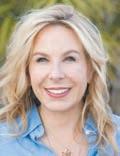
Audra is dedicated to helping individuals create a joyful intuitive life through (w) holistic health self-discovery practices such as intuitive readings, guided meditations, divine guidance, energy work, workshops and retreats. Virtual and In-Person Services in Richmond, VA. See ad, page 8.
Thermography
DEBBIE TROXELL, RN, MSNH Thermographer
The Wellness Village 1404 Starling Dr, Richmond 804-683-7774
RVAThermography.com

Yoga
Safe, non-invasive, radiationfree imaging. Preserve your breasts, heart health and much more. Live happier and healthier longer! Interpreted by Matthew Lee, MD, RPh. See ad, page 2.
GLENMORE YOGA & WELLNESS CENTER
Far West End Location 10442 Ridgefield Pkwy, Henrico 804-741-5267
Info@GlenmoreYoga.com
GlenmoreYoga.com

Incorporate yoga into your life at Glenmore with in-person and online student-focused, multi-level classes from Ageless Gentle, Beginner and Yin to Vinyasa Flow, Restorative and Meditation. 200- and 300Hour Teacher Training. Voted best Richmond Yoga Center.

Pharmacy, has been an industry leader for 23+ years. Specialists in customized compounding, bio-identical hormones, veterinary/equine compounding, traditional pharmacy, palliative care, professional quality supplements, CBD experts, Food Inflammation Testing, and more. See ad, page 21.
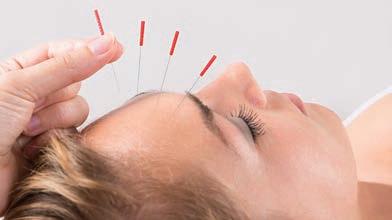
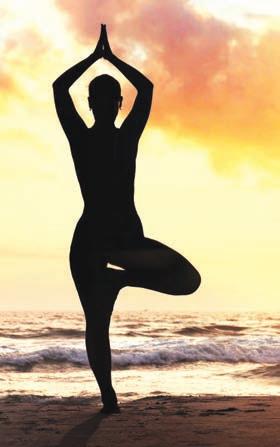




Register to Attend
The first 100 registrants will receive a FREE TOTE.

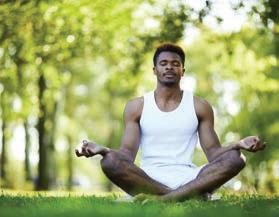

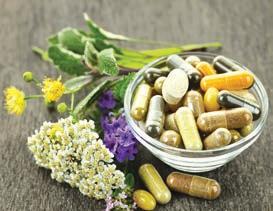

Location: Dewey Gottwald Center at Science Museum of Virginia
Date: October 12, 2024
Time:12-4pm
SPONSORS:



Register now at NARichmond.com and if you're interested in becoming a vendor, contact Regina@NARichmond.com.
